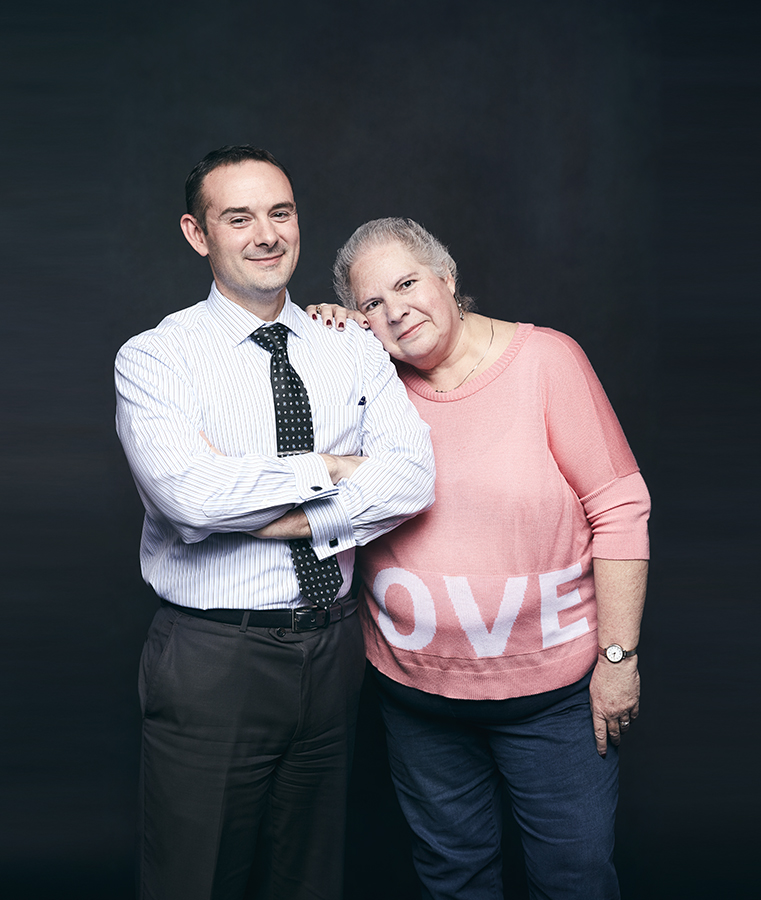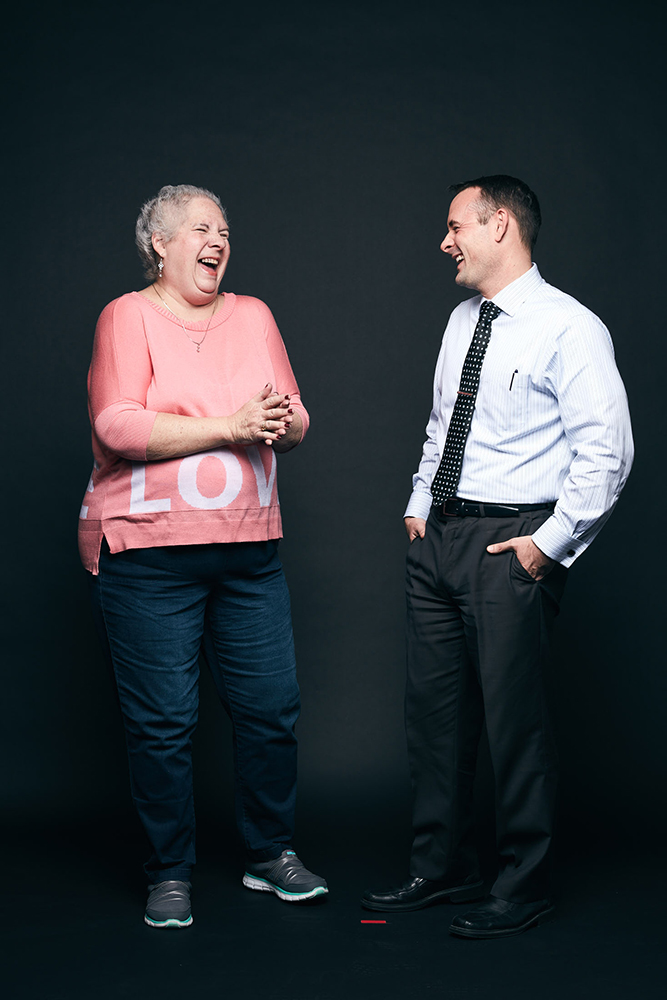At this stage, there are some cancers that doctors feel they’ve got a handle on. Others, however, still leave them a bit baffled. “We’re really making big strides against cancer and in cancer care,” says David Draper, M.D., the director of gastrointestinal oncology at TriHealth’s Cancer Institute. “But pancreatic cancer is still one of those Dark Ages cancers.”
Here’s why: For starters, the way the pancreas is situated in the body makes early detection difficult; symptoms usually don’t appear until the cancer has already progressed to a late stage. “Stage II colon cancer has survival rates of 60 to 80 percent,” says Draper. “The five-year survival rate for stage II or III pancreatic cancer is less than 10 percent. It’s not a good cancer.”
This was what Debra Hogsten was facing in September 2015 when she was diagnosed with stage IIB pancreatic cancer. Hogsten, 62, of Alexandria, checked into the emergency room at Good Samaritan Hospital in Clifton with symptoms that included nausea, rapid weight loss, and jaundice. “It was a total shock,” she recalls. “When the surgeon came in to tell me what the tests had shown, I happened to be by myself. I felt sorry for him almost. But I got all my crying and issues out right then and turned to, ‘I’m going to do what I need to do.’” For Hogsten, that meant two cycles of aggressive chemotherapy to shrink the tumor on the head of her pancreas, then an eight-hour surgery called a Whipple procedure to remove it, followed by four more rounds of chemotherapy as well as radiation. “They got it all,” says Hogsten. “And there was nothing in the lymph nodes. It’s unbelievable.”
Reality television has trained us to expect a joyous “big reveal” as the culmination of hard work by a team of experts. But in real life, cancer often works the opposite way. When tests revealed Hogsten’s tumor, Draper and a multi-disciplinary team—made up of radiologists, pathologists, a surgical oncologist, nutritionist, psychologist, geneticist, and nurse navigator—swung into action with an all-points approach. “The days of a surgeon cutting out the cancer and dealing with everything else on the back end are gone,” says Draper. “Most people need some sort of pre-treatment before surgery.”
As Hogsten’s treatment progressed, small and steady signs appeared along the way—in her symptom relief, imaging, and blood work—that pointed toward a good outcome. Nevertheless, Hogsten says, “Dr. Draper told me from the beginning that he wouldn’t make anything look rosy if it wasn’t.” Hogsten and Draper attest to the bond that often forms between physicians and patients during treatment for a serious illness, given the frequency of their interactions and the need for an honest exchange of information.

“For the past year, they’ve been my friends pretty much, because that’s who I saw all the time,” says Hogsten of her medical team. For doctors, this relationship can make delivering good news that much more gratifying, but breaking bad news becomes harder, too. Treatment can feel like an emotional roller-coaster ride for both patient and doctor as a result. “We’re a sensitive group,” says Draper. “In oncology, we’re as nervous to see the imaging as the patient is to get the report back. It’s a nerve-racking experience.”
Hogsten’s gray hair may still be short and she claims to still be shaking off the last of her “chemo brain”—the mental fog that some patients experience as a side effect—but she has recovered from her successful cancer surgery and her blood work and imaging are clear. At times, she feels as stunned by her good fortune as she once felt about her dreadful diagnosis.

Photograph by Jeremy Kramer
“I just can’t believe it,” she says. “It’s a life-changing experience. I didn’t think real often about the possibility of dying. I had never done my will. I just expected to be here, I guess. But my attitude now is, if you want to do something, don’t wait.” Her bucket list includes time with her family on the Outer Banks of North Carolina and plans for a trip to Alaska. Not on the list? Playing the “what if” game. Instead, Hogsten tells herself, “You’re here now, you got up, and you’re breathing today. Things are looking good.”





Facebook Comments